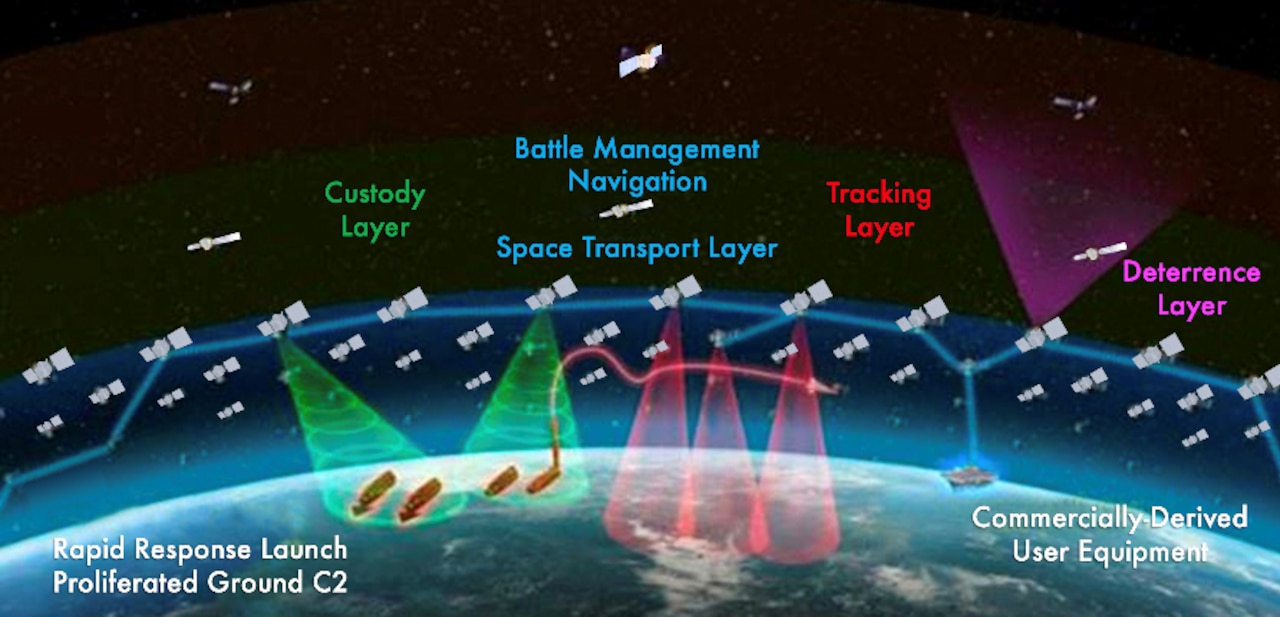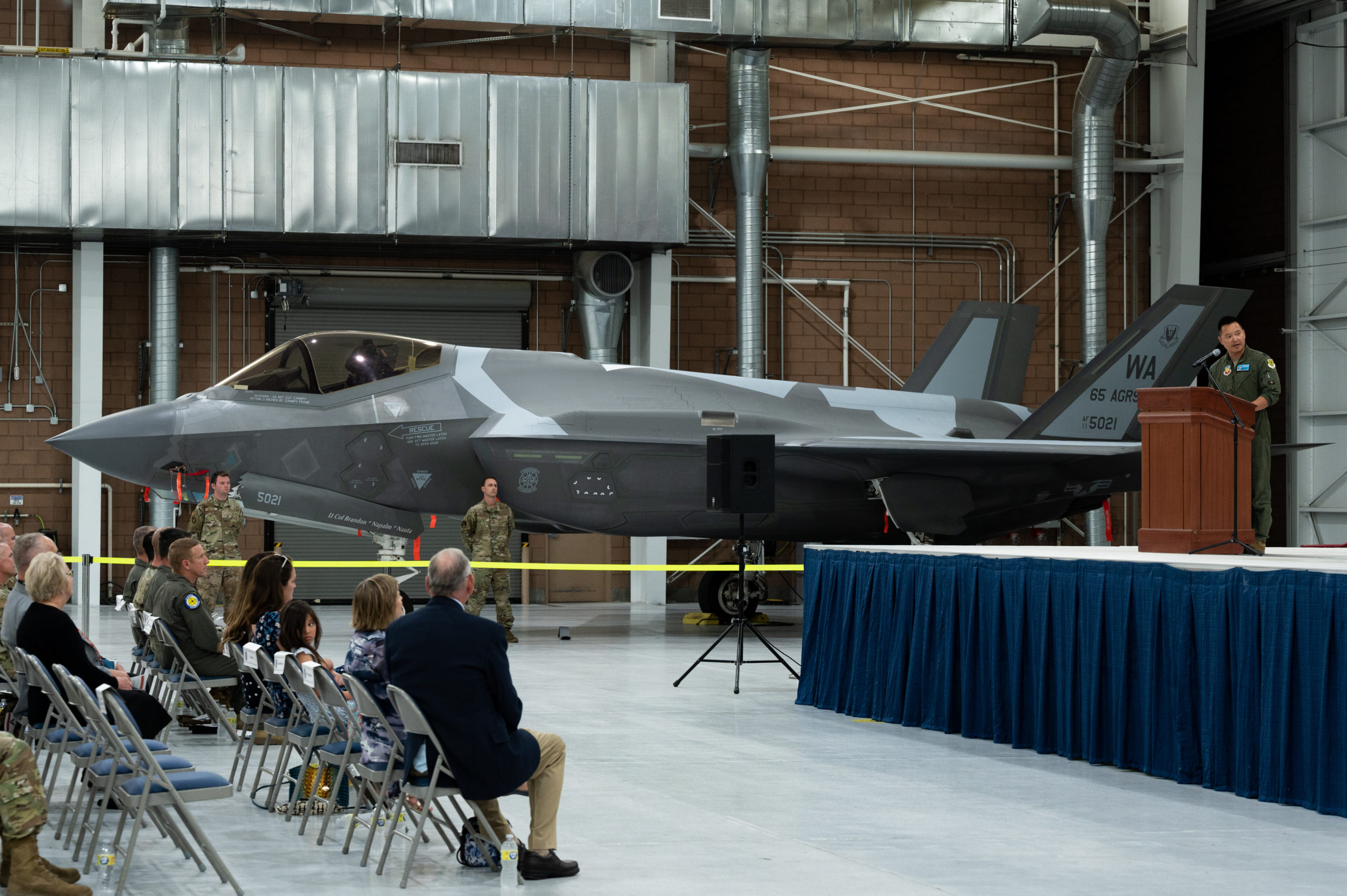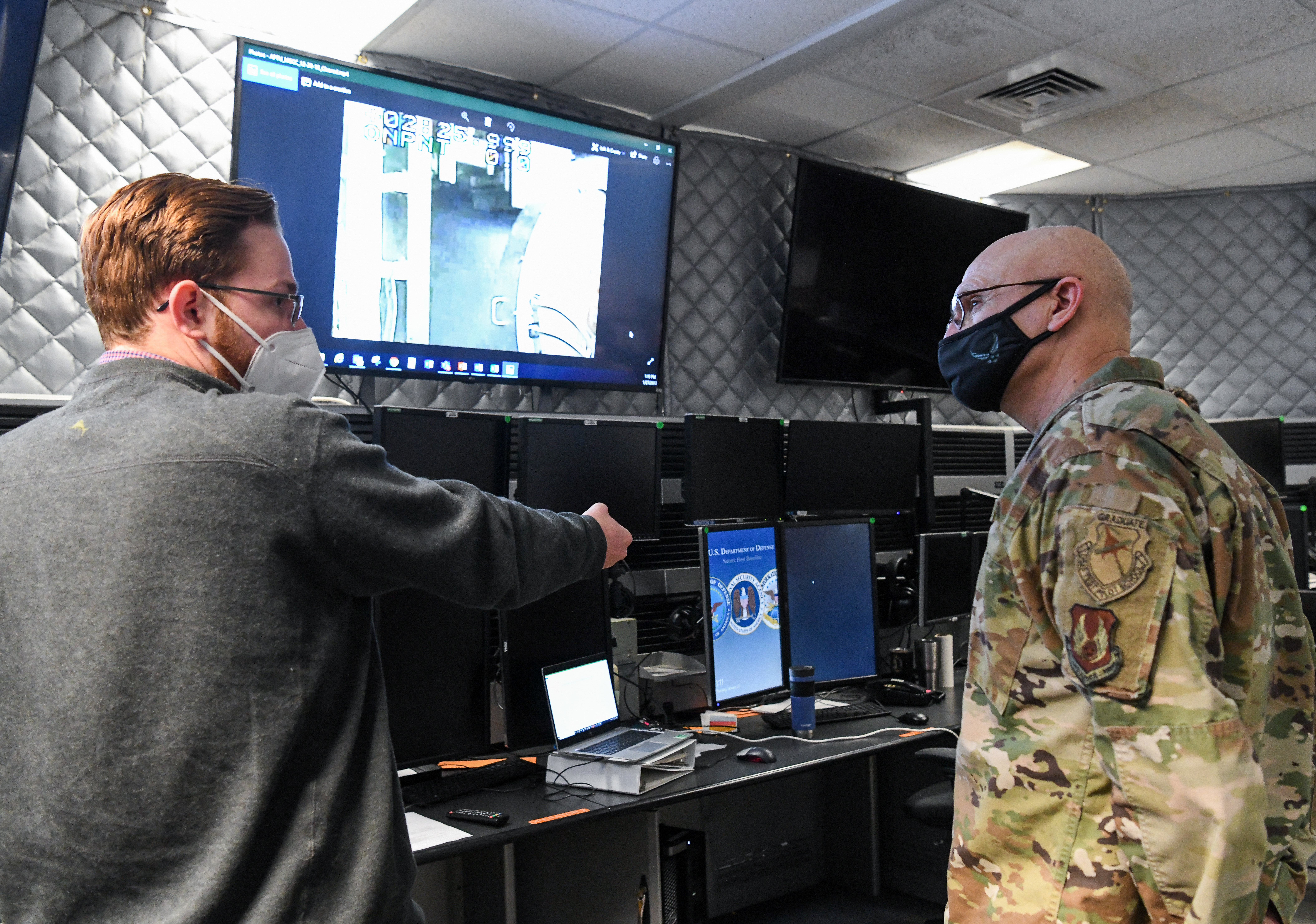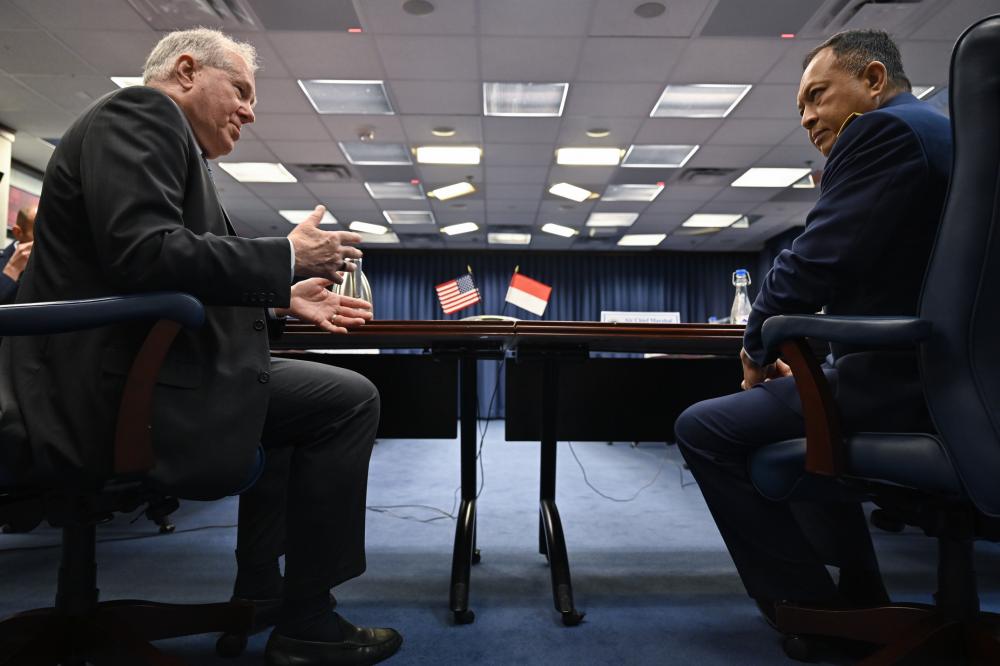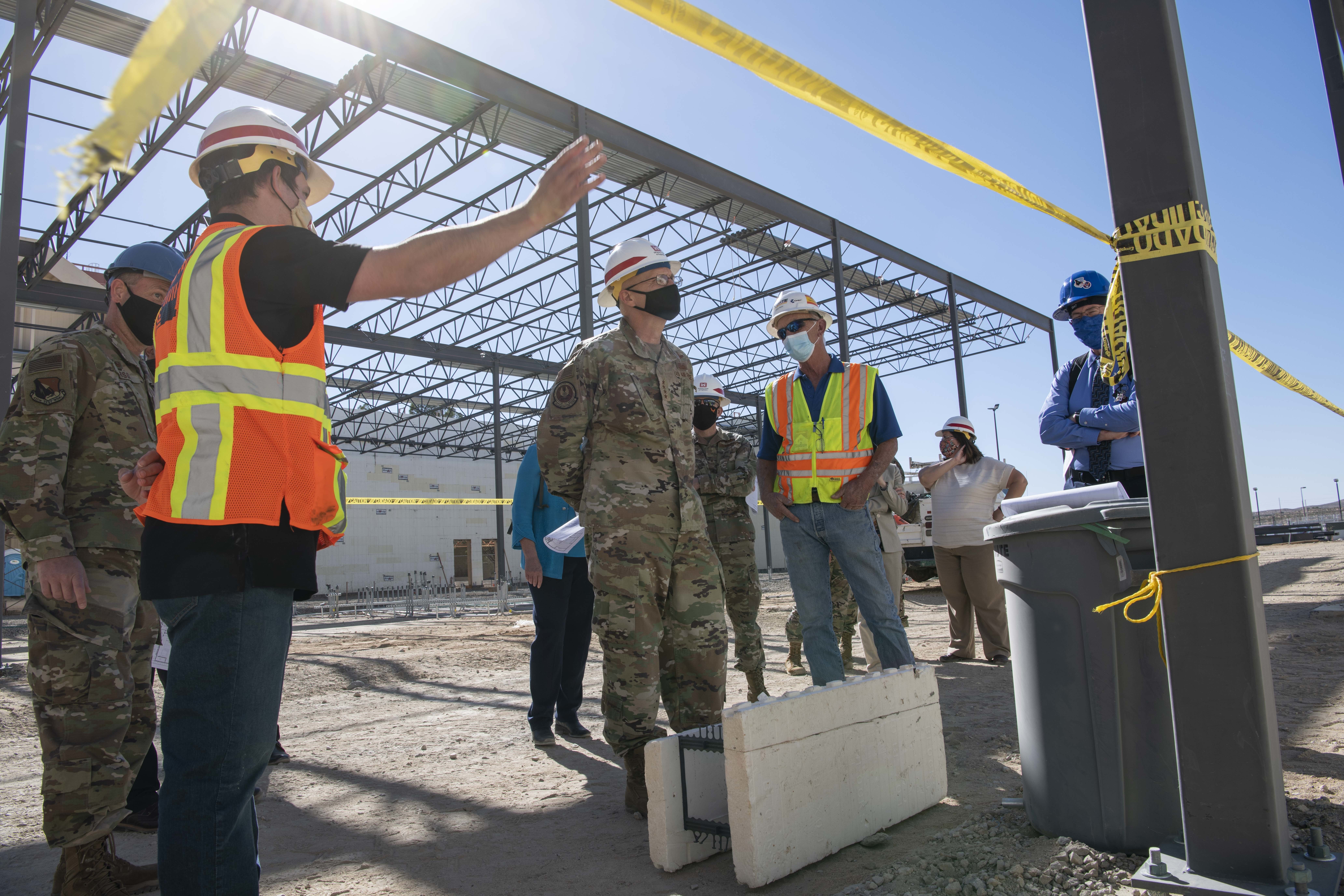Editor’s Note: This story was updated June 14 to clarify that NExT is being “pulled out of” the Tranche 1 Demonstration and Experimentation System, not replacing it.
The Space Development Agency is looking to buy 10 satellites capable of carrying experimental payloads to integrate into its National Defense Space Architecture, it announced June 10.
The planned new satellites are being referred to as the National Defense Space Architecture Experimental Testbed, or NExT, and will “demonstrate warfighter utility of emerging mission partner payloads prior to potential incorporation in future tranches,” according to an industry solicitation document.
“Tranche” refers to new batches of satellites the agency expects to launch every two years.
NExT is being “pulled out of” the Tranche 1 Demonstration and Experimentation System, or T1DES, that SDA first announced in October 2021, SDA director Derek M. Tournear said in a video announcing the change.
Like T1DES, NExT will be part of a larger low Earth orbit, or LEO, constellation that SDA is planning to build, highlighted by hundreds of satellites in the Transport Layer that will give the Pentagon a range of options for sharing information and serve as the “backbone” for joint all-domain command and control.
“NExT leverages the low latency data transfer and beyond line-of-sight command and control infrastructure established by the Tranche 1 Transport Layer (T1TL) program to field and connect additional space vehicles with different mission payload configurations,” the solicitation states, copying language from the T1DES solicitation.
However, the new name signifies a shift in how the program is structured, Tournear said.
“NExT is a standalone tranche that looks very similar to what we had been calling [T1DES]. … We pulled it out completely to make that intentional. NExT is a standalone program independent of Tranche 1,” Tournear said. “It’s on its own timeline, and the whole goal is to treat it a little differently than we do our standard tranches.”
NExT is aiming for a first launch date of March 30, 2024, followed by subsequent launches in October 2024 and May 2025. NExT will also be different from T1DES in that its satellites will be launched as “rideshares” on other commercial launches instead of being carried on one specific rocket.
Like T1DES, though, SDA is only planning on awarding one contract for NExT, and the goal is still to use the satellites for government payloads that will test new technologies and capabilities.
